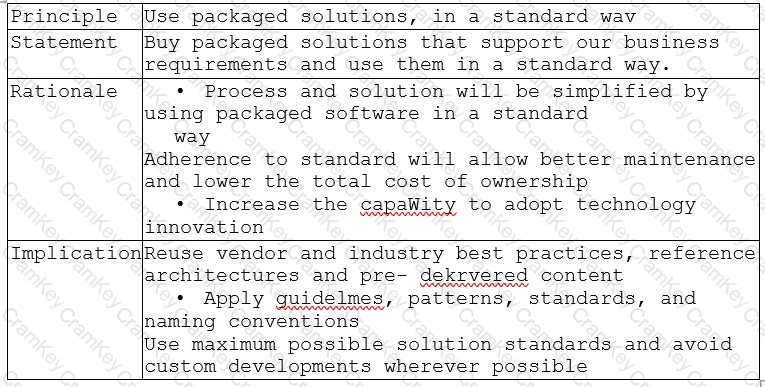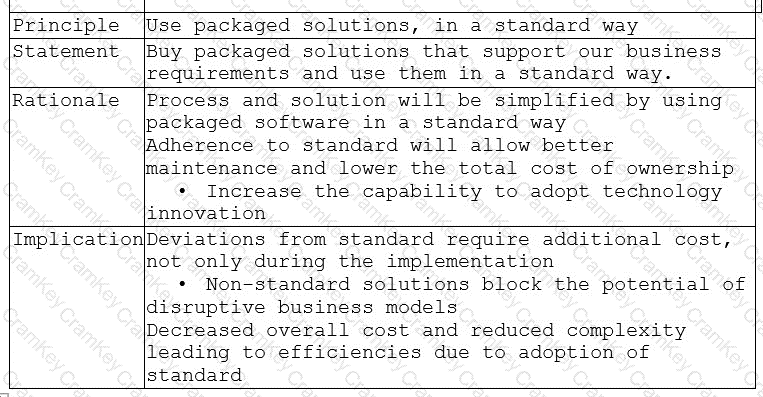The SAP Enterprise Architecture Framework (EAF) defines an Architecture Roadmap as a "high-level plan that describes the sequence of activities and deliverables required to achieve the target architecture." The roadmap should be based on the artifacts of the previous phases of the EAF, such as the Business Strategy Map, the Solution Concept, and the Baseline Business and Solution Architecture.
The first step in creating an Architecture Roadmap is to define the initiatives that will be needed to achieve the target architecture. These initiatives should be aligned with the business outcomes that the organization is trying to achieve.
The next step is to detail the business capabilities and solutions that will be needed to support the initiatives. This will help to ensure that the roadmap is realistic and achievable.
Finally, the roadmap should be created in two versions: an outcome-based roadmap and an application-specific roadmap. The outcome-based roadmap will show how the initiatives will achieve the business outcomes. The application-specific roadmap will show how the solutions will be implemented.
By following these steps, you can create an Architecture Roadmap that will help you to achieve your organization's strategic goals.
Here are some of the benefits of creating an Architecture Roadmap:
It can help you to visualize the sequence of activities and deliverables required to achieve your goals.
It can help you to identify dependencies between activities and deliverables.
It can help you to track progress and to make adjustments as needed.
It can help you to communicate your plans to stakeholders.
Therefore, an Architecture Roadmap can be a valuable tool for managing complex transformations.
According to the SAP Enterprise Architecture Framework, which is a methodology and toolset by the German multinational software company SAP that helps enterprise architects define and implement an architecture strategy for their organizations, the steps involved in creating an Architecture Roadmap are:
Reuse the artifacts of previous phases as input for creating roadmaps. The previous phases of the architecture development cycle are: architecture vision, business architecture, information systems architecture, and technology architecture. The artifacts of these phases provide the information and guidance for defining the scope, objectives, stakeholders, requirements, constraints, and solutions of the architecture project. Some of the artifacts that can be reused for creating roadmaps are: stakeholder map, business strategy map, solution strategy, solution context diagram, solution component diagram, solution application use-case diagram, solution value flow diagram, etc.
Start with a roadmap construction table, by defining initiatives and business outcomes, and detailing the business capabilities and solutions. A roadmap construction table is a tool that helps to structure and organize the information and elements that are needed to create a roadmap. It consists of four columns: initiatives, business outcomes, business capabilities, and solutions. Initiatives are the strategic actions or projects that are planned to achieve the business goals and drivers. Business outcomes are the measurable results or benefits that are expected from implementing the initiatives. Business capabilities are the skills, resources, and competencies that are required or need to mature to support the initiatives and outcomes. Solutions are the products or services that are used or delivered to enable the capabilities and outcomes.
Create two versions of a roadmap (outcome-based and application-specific). A roadmap is a visual representation of the transition architectures that will move the organization from its current state (baseline architecture) to its desired future state (target architecture). A roadmap shows the sequence and timing of the transition architectures, as well as the deliverables, resources, and risks associated with each transition architecture. There are two types of roadmaps that can be created: outcome-based and application-specific. An outcome-based roadmap focuses on the business outcomes that are achieved by implementing the transition architectures. An application-specific roadmap focuses on the solutions or applications that are implemented or changed by the transition architectures.
The other options (A, B, C) are not correct for how to present an Architecture Roadmap that addresses the business challenge because they either skip or misrepresent some of the steps in creating an Architecture Roadmap. For example:
Option A is not correct because it does not include reusing the artifacts of previous phases as input for creating roadmaps, which is an important step to ensure alignment and consistency with the architecture project. It also suggests creating a work breakdown structure instead of a roadmap construction table, which is not a tool in this framework.
Option B is not correct because it does not include creating two versions of a roadmap (outcome-based and application-specific), which is an important step to provide different perspectives and levels of detail for the roadmap. It also suggests focusing on the target architecture instead of the transition architectures, which is not a logical approach since the latter determine how to achieve the former.
Option C is not correct because it does not include starting with a roadmap construction table, which is an important step to structure and organize the information and elements that are needed to create a roadmap. It also suggests focusing on the business strategy map instead of the initiatives and outcomes, which is not a sufficient level of detail for creating a roadmap.



